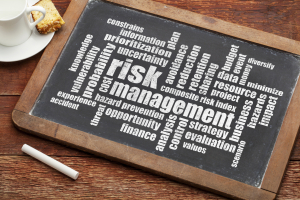Make Risk Management a Priority for 2015
 As the U.S. economy continues to forge ahead, many companies are focusing on their growth opportunities in the New Year. That might mean acquiring a competitor, launching a new product line, opening new offices or obtaining a substantially larger line of credit. For many businesses, greater prosperity may be right around the corner.
As the U.S. economy continues to forge ahead, many companies are focusing on their growth opportunities in the New Year. That might mean acquiring a competitor, launching a new product line, opening new offices or obtaining a substantially larger line of credit. For many businesses, greater prosperity may be right around the corner.
But the senior leadership team (SLT) also needs to make risk management a priority for 2015. The nation’s economic recovery, now in its fifth year, won’t continue forever. As we’ve seen in recent headlines, companies face the risk of unexpected shocks to the global energy, political and financial sectors—which could dramatically change their revenue and profit expectations.
Here are four suggestions for building risk management into the corporate strategic plan:
- Identify the most likely threats to the organization’s operations, revenue and profitability. For instance, in banking this might be a significant rise in interest rates or additional compliance requirements. In energy, it might be a prolonged downturn in oil and gas prices. The nature of these threats and potential impact differ among industries and geographies, so it is important for the SLT to monitor key trends in the marketplace.
- Prepare a list of scenarios that might happen if certain threats materialize. What would happen to the company’s brand or its position in the marketplace if X, Y or Z occurred this year? In 5 years? This exercise can be very helpful in pinpointing the situations that hold the greatest hazards for the company.
- Develop a crisis management or remediation plan. Once the most serious threats have been identified, the SLT can prepare a response plan well in advance of a possible crisis. In some scenarios, a proactive approach may be able to prevent a problem from occurring or reduce the magnitude of the threat. In other cases, having a plan in place ensures that the SLT knows what to do in the event of a crisis.
- Repeat these steps every year, or more often depending on the volatility of the industry and/or market.
In the event of a crisis, a company’s shareholders, employees, customers and the media will be paying very close attention. A prompt and effective response can create a positive impression, while a delayed or uncoordinated response can amplify the negative impact.
In any case, it’s essential for the SLT to understand the risks the organization faces as well as the growth opportunities. That kind of balanced outlook in the C-suite provides a solid foundation for long-term, sustainable success.















